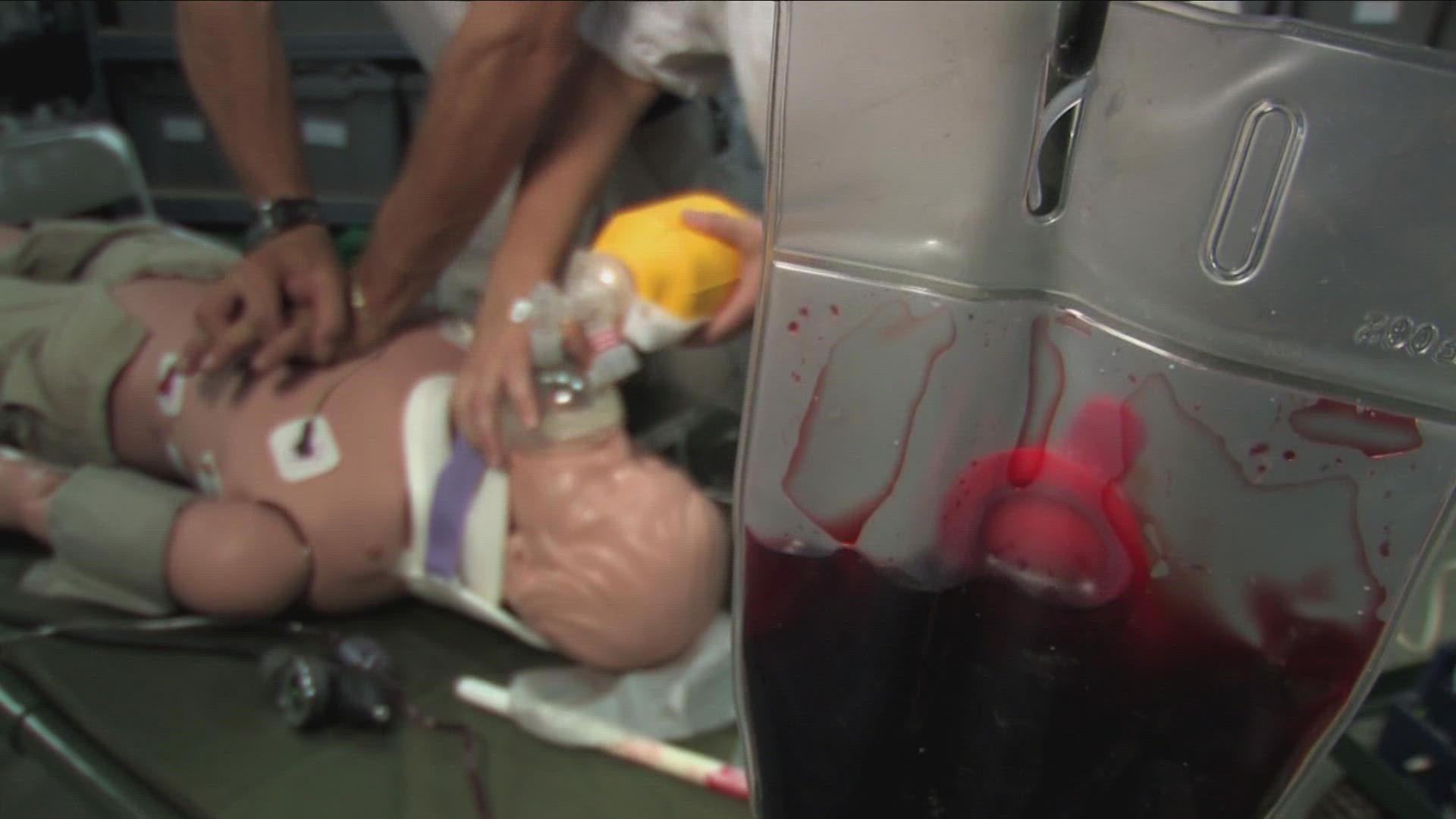BUFFALO, N.Y. — The collapse of Buffalo Bills defensive back Damar Hamlin from apparent cardiac arrest on a nationally televised Monday Night Football game may have given pause to a lot of parents of youth, high school, and college athletes.
Experts say it also demonstrated the need to be vigilant in preparing for such unanticipated events.
"I think we saw the power of educated trained people with very clear roles executing in the moment last night," said Andrew Ryland, senior manager of education and training for USA Football, the national governing body for the sport at the youth and amateur level.
According to Ryland, certified programs have coaches and staff trained to watch for signs of potentially life-threatening events and use life-saving measures, such as CPR.
Also vital is the implication and regular practice of an emergency action plan.
"If practice is good enough for kids it should be good enough for us," said Ryland.
"Sometime before the season starts you go out on the field and you have a walkthrough and you talk about roles and responsibilities and locations. Whether it's the location of the AED or the gate to get to the field for an ambulance to enter to a particular spot."
Because laws and policies can vary from state to state, Ryland says parents should not be hesitant to ask to see such a plan whenever deciding to allow their child to participate in sports.
Athletic Trainers: The Front Line of Defense
"Their medical staff did what was best and what they needed to do," said Rachel Reichart, interim Head Athletic Trainer at Buffalo State College, when reflecting on what she observed while watching the Bills game which was interrupted and eventually postponed after Hamlin went down.
Attendees to sporting events usually only become aware of athletic trainers when they enter (often rushing) onto the field of play.
Sometimes this occurs before fans themselves even notice an injured player.
"We are trained to be watching all the time," said Reichart. "If we see someone down and they're not getting up, they have just a few seconds and if they're not moving we're there."
Though they are most often dealing with sprains or breaks, trainers are constantly practicing to react to more dire situations.
"We're all trained in rendering first aid including CPR and AED...spine boarding and cervical spine injuries as well," she said.
A Lesson For All of Us
"The learning moment for us now is for a more global emergency action plan that covers more things with people who have designated roles and responsibilities," said Ryland, who said it was very apparent to him how well trained and practiced those in place at the game in Cincinnati were, and who most likely saved Hamlin's life.
"That's a lesson that can be learned and applied whether it's a youth league or a high school, or at big-time college football...to make sure their policies and procedures are using best practices and are up to date."
Reichart, who also serves as a clinical preceptor for Daemen College and the University at Buffalo Athletic Training Education Programs, agrees.
"It is unfortunate that these things happen, but I think the NFL is bringing to light how other institutions including the NCAA and high schools need to make sure they are tackling these issues too," she said.

